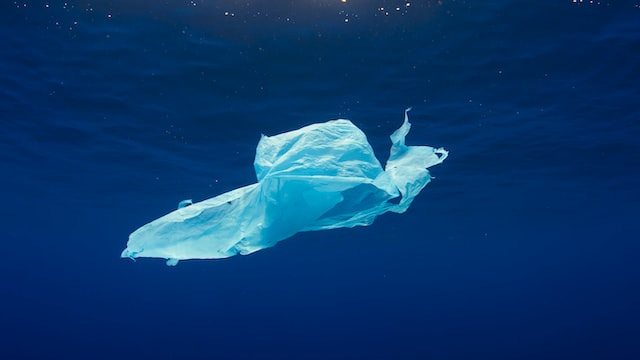
On Howard Street, a Chicagoan walks on one side of the street and pays $0.07 per bag to fund the “Chicago Checkout Bag Tax Ordinance.” Directly across that same street is Evanston, Illinois, where a shopper can still buy as many groceries or items as she wants without paying a charge for additional bags.
In February 2017, when this Chicago tax went into effect, it was concerning for retailers. Would customers simply move to the other side of the street? Would customers buy less items, solely so they could walk out with them in their hands, book bags or purses? Would customers skip buying items altogether once they found out they had to pay the bag tax? Or, in an ever-increasing eco-friendly world, would customers just give a collective shrug and pay the $0.07?
And Chicago was not alone nor the first to do it. Forbes guesstimates that 349 cities, counties and states also have a plastic bag tax.
Retail giants like Target made it more appealing to be eco-friendly, offering $0.05 off for customers who used their own bags (with a maximum discount of four bags at self-checkout lanes). Discount retail chains, including most dollar stores, sell reusable bags at the front of the stores.
Recommended Read: “Chicago In Top Five for Hybrid Car Sales” (page 1, page 2)
Arguably, paying $1 for the equivalent of 14 plastic bags may not make sense. But the durability of reusables bags versus lesser-quality plastic — that can occasionally tear before you reach your car — makes that $1 bag more reasonable in the long run.
Some consumers debate the bag tax altogether, especially when 92% of people reuse plastic bags in a number of ways: composting, as garbage liners, for animal waste, to carry lunches, and more.
ADVERTISEMENT ~ Amazon
As an Amazon affiliate, I earn a percentage from purchases with my referral links. I know some consumers are choosing to boycott Amazon for its DEI removal. However, after thinking about this thoroughly, I want to continue promoting cool products from small businesses, women-owned businesses and (specifically) Black-owned businesses who still feature their items on Amazon. As of the first date of Black History Month 2025, each new post will ALWAYS include a MINIMUM of one product sold by a Black-owned business. (I have visited the seller’s official site to verify that Amazon Black-owned logo.) I am (slowly) doing this with older, popular posts too. If you still choose to boycott, I 100% respect that decision.

Statewide Bans Versus Eco-forced Customers
In Hawaii, California and New York, plastic bags are banned altogether. In 2020, many cities are following the pattern of these three states. They’re banning plastic bags altogether instead of just taxing the bags. And Hawaii is taking it one step further by being the first state to try to ban plastic in restaurants. This includes plastic drink bottles, eating utensils, stirring sticks, bags and straws. For tourists who enjoyed these collectibles while traveling, that’s about to disappear.
Hawaiian tourists probably aren’t surprised though. While many states threaten to charge misdemeanors and fines for littering, islands like Maui have “$1,000 littering” fine signs strategically placed all over walking paths. Hawaii has always been a front-runner when it comes to the environment, primarily due to everyday living (i.e., gardening, waste processing, electricity, etc.).
Recommended Read: “Memories of Lahaina Hawaii and steam locomotives ~ The Sugar Cane Train was my intro to Lahaina in Maui”
So how does that influence locals and/or tourists shopping in retail stores? By default, it’s making customers invest in more environmentally friendly habits. Hawaii still gives a green light to reusable bags, compostable plastic bags and recyclable paper bags. All of the above can still be used the same way that 92% of people in the U.S. do, as the American Plastics Council documented. They just may have to pay a few extra cents to do so.
Whether worldwide retail chains are willingly or being forced to change the way customers shop, there is a bit of a backlash. Californians in cities that banned bags, before the 2016 ban, used fewer shopping bags. This resulted in 40 million pounds of less plastic waste. However, National Geographic reports that the sales of trash bags rose. With that, the 40 million pounds of less plastic waste dropped to 28 million pounds instead.
Product manufacturers in the United States aren’t being faced with the same kind of harsh penalties that Kenya is though. In Kenya, manufacturers, importers, distributors and users face up to $38,000 in fines or four years in prison for using plastic. While the East African country has become cleaner—less bags hanging from trees, less plastic waste clogging the drains, fewer malaria-carrying mosquitoes—one has to wonder has the plastic ban gone too far.
Or, for eco-friendly consumers who prefer Earth-friendly stores that make this a top priority, is that making these regions more appealing?
(Note: This post was originally published as an Upwork freelancer for RETHINK Retail.)
Did you enjoy this post? You’re also welcome to check out my Substack columns “Black Girl In a Doggone World,” “BlackTechLogy,” “Homegrown Tales,” “I Do See Color,” “One Black Woman’s Vote” and “Window Shopping” too. Subscribe to this newsletter for the monthly post on the third Thursday.
If you’re not ready to subscribe but want to support my writing, you’re welcome to tip me for this post! I’ll buy a dark hot chocolate on you. Thanks for reading!




